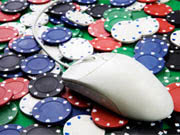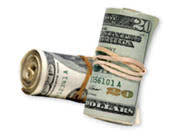 When it comes to enjoying online poker, it is easy to see why many people will have concerns about signing up for a poker site and handing over their details. Even though online poker sites work extremely hard on their security and look to provide players with a safe and secure platform to play online, some people will always have concerns. For many people, the biggest issue comes with handing over banking or financial details, because this is something that we are encouraged to keep as private as possible.
When it comes to enjoying online poker, it is easy to see why many people will have concerns about signing up for a poker site and handing over their details. Even though online poker sites work extremely hard on their security and look to provide players with a safe and secure platform to play online, some people will always have concerns. For many people, the biggest issue comes with handing over banking or financial details, because this is something that we are encouraged to keep as private as possible.
Even though online poker sites offer a high standard of security, it is understandable why many people would prefer not to provide any of their details online. You may think that this will prevent you from enjoying all of the benefits that are associated with playing poker online, but this doesn’t have to be the case. This is because the Paysafecard option offers absolute security. When it comes to feeling and staying safe online, you will love the benefits that come from choosing this option.
The prepaid option is the safest option for many poker players
The prepaid principle of the card ensures that you don’t need to provide any banking, credit card or debit card details when you deposit funds into your account. This means that you can be 100% confident that your banking details are kept safe. With the Paysafecard available in £10, £25, £50, £75 and £100 options, you should find that there is an easy and convenient way to fund your online poker playing without placing your future finances at risk.
Pay with a PIN when you play poker
Your 16 digit PIN is your passport to enjoying safe online poker fun and the convenience of the PIN option means that it can be enjoyed in a wide range of places. If you are looking to make the most of your time and money when it comes to online poker, make sure you choose the option that makes you feel comfortable.
The fact that the Paysafecard option is available to buy at over 500,000 outlets around the world, if you would prefer to not carry out personal transactions online, you can still enjoy online poker. Sometimes to win at poker, you need to take risks but you don’t need to take risks with your finances and personal details, not when the Paysafecard option is available.
 Given that online poker is one of the most popular online activities at the moment, it is easy to see why new players are coming to the fore all the time. With TV shows providing great insight into poker and showcasing poker events and tournaments, there is a high level of interest in the activity. Add this to the chat and discussion that friends will have about their online poker play and it is easy to see why so many new players will be interested in learning about poker.
Given that online poker is one of the most popular online activities at the moment, it is easy to see why new players are coming to the fore all the time. With TV shows providing great insight into poker and showcasing poker events and tournaments, there is a high level of interest in the activity. Add this to the chat and discussion that friends will have about their online poker play and it is easy to see why so many new players will be interested in learning about poker. You many associate William Hill with sports betting but the company offers a great range of online gaming opportunities. In addition to their sports betting options, William Hill provides casino, bingo and yes, online poker options for players. The poker site is a great way to improve your skills because there is a comprehensive poker school where you will be able to develop a great number of skills for the games and tournaments that lie ahead.
You many associate William Hill with sports betting but the company offers a great range of online gaming opportunities. In addition to their sports betting options, William Hill provides casino, bingo and yes, online poker options for players. The poker site is a great way to improve your skills because there is a comprehensive poker school where you will be able to develop a great number of skills for the games and tournaments that lie ahead. In case you are wondering why there are so many online poker players broke, well the answer comes easily: because they have a poor money management!
In case you are wondering why there are so many online poker players broke, well the answer comes easily: because they have a poor money management!